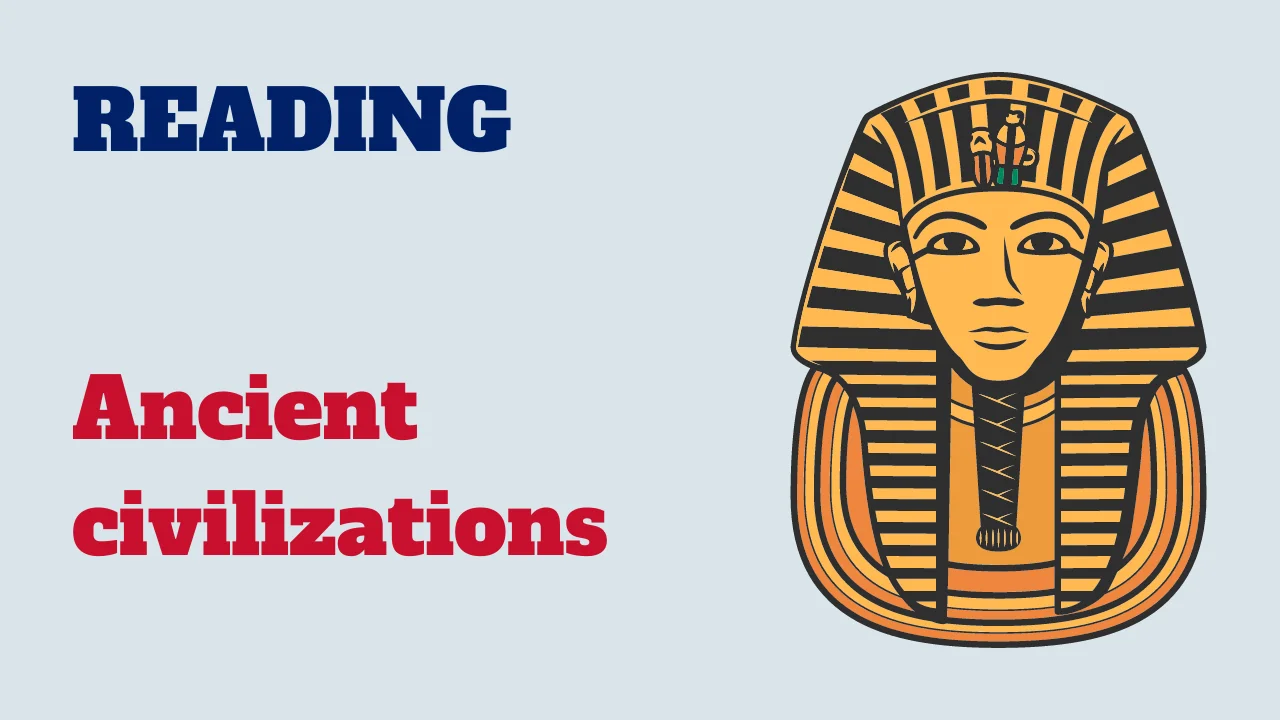Welcome to an exploration of ancient civilizations! In this reading activity, we’ll delve into the fascinating history of six of the earliest civilizations and the legacies they left to the world.

From the cradle of civilization in Mesopotamia to the powerful empires of Ancient Egypt, India, China, Peru, and Mesoamerica, get ready to discover the remarkable achievements and enduring influences of these ancient societies.
Text: Ancient civilizations
Ancient civilizations represent the dawn of human society’s cultural, technological, and political evolution. These early societies laid the foundational structures for modern civilization through their innovations, governance, and cultural achievements.
One of the earliest known civilizations is Mesopotamia, located between the Tigris and Euphrates rivers in present-day Iraq. Often referred to as the “cradle of civilization,” Mesopotamia saw the development of the earliest forms of writing (cuneiform), complex irrigation systems, and monumental architecture like the ziggurats. The Sumerians, Akkadians, Babylonians, and Assyrians each contributed to the region’s rich legacy.
Ancient Egypt, flourishing along the Nile River, is renowned for its monumental achievements in architecture, most famously the pyramids and the Sphinx. The Egyptians developed a sophisticated system of writing (hieroglyphics), made significant advances in medicine and mathematics, and created enduring art and religious traditions centered around a pantheon of gods and an elaborate belief in the afterlife.
The Indus Valley Civilization, located in present-day Pakistan and northwest India, was notable for its advanced urban planning, with well-laid-out cities like Harappa and Mohenjo-Daro. This civilization developed early forms of standardized weights and measures, advanced drainage systems, and possibly an undeciphered script, indicating a complex and organized society.
In China, the Shang and Zhou dynasties marked the early development of Chinese civilization. The Shang Dynasty is known for its advances in bronze casting, the creation of a writing system, and the development of a stratified society. The Zhou Dynasty introduced the Mandate of Heaven concept, which justified the rule of kings and became a central element of Chinese political philosophy.
The ancient civilizations of Mesoamerica, such as the Olmecs, Mayans, and Aztecs, also made significant contributions. The Mayans, for instance, developed an intricate calendar system, sophisticated astronomical knowledge, and a complex writing system. The Aztecs built one of the largest and most powerful empires in the region, with their capital Tenochtitlán showcasing advanced engineering and urban planning.
These ancient civilizations laid the groundwork for subsequent societies, influencing legal systems, scientific progress, cultural practices, and architectural styles. Their legacies continue to be studied and admired for their profound impact on human history.
Comprehension questions
Congratulations on completing the exploration of ancient civilizations! By understanding the achievements and legacies of these early societies, we gain insight into the foundations of human culture and progress. Remember to reflect on how their innovations continue to shape our world today.



